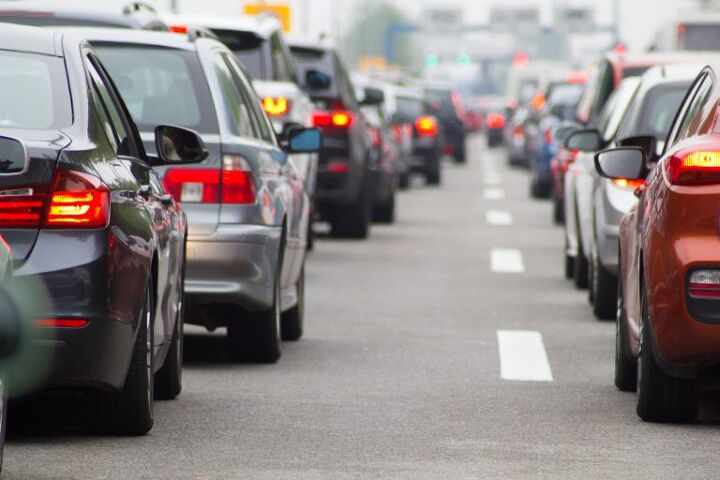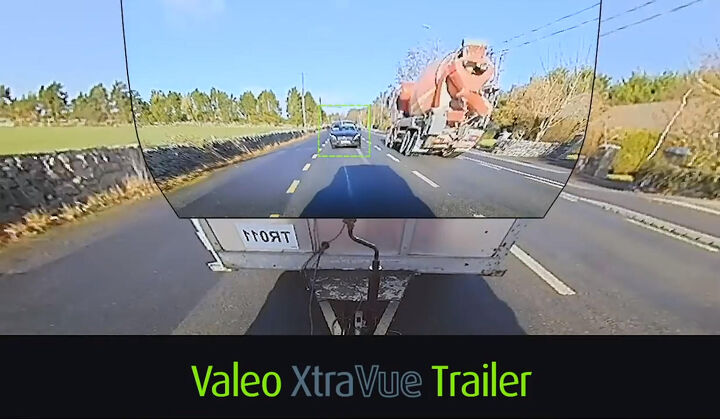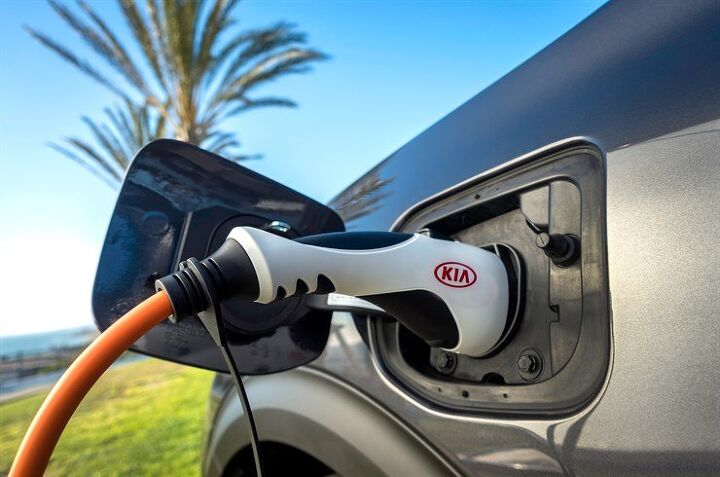#AutomotiveSafety
Consumer Reports: What Are Uber, Lyft Are Doing About Recalls?
As ride-hailing services utilize the personal vehicles of contractors, rather than a commercial fleet of their own, repairs and recalls have to be handled by individual drivers. While it shouldn’t be a revelation that some recalls fall through the cracks, Consumer Reports is concerned that the ratio of unaddressed safety issues are unbecoming of companies pushing multibillion-dollar IPOs.
“Uber and Lyft are letting down their customers and jeopardizing their trust,” suggested William Wallace, products policy manager for Consumer Reports. “Uber’s website says people can ‘ride with confidence,’ while Lyft promises ‘peace of mind,’ yet both companies fail to ensure that rideshare cars are free from safety defects that could put passengers at risk.”
Insurance Companies Are Keeping Tabs on How Often You Use Your Phone Behind the Wheel
With mobile phones now a ubiquitous part of modern-day life, distracted driving has ballooned into a legitimate public safety problem. Alarming studies continue to pour in, with many claiming that driver cell phone use is likely underreported by authorities in crash reports. It’s hard to quantify, especially since nobody wants to admit that their moment of weakness may have contributed to an accident.
Add in a National Highway Traffic Safety Administration survey that found 30 percent of drivers aged 21 to 34 believe texting doesn’t negatively impact their driving, and you’d be forgiven for picking up your keys with sweaty palms.
A new study claims the issue has only gotten worse, with drivers spending more time on their phone than ever before. However, the way the data was acquired is disconcerting in itself. Insurance companies are tapping traffic data startups to monitor people’s phones, and they’re already capable of tracking millions of American devices.
IIHS to Automakers: Stop Tapping the Brakes on Rear-seat Safety
The Insurance Institute for Highway Safety, currently on a never-ending quest to improve automotive safety and provide underwriters with data, suggested on Thursday that rear-seat passengers are getting the short end of the stick. The announcement comes shortly after the State of Washington announced a new law that would update its Child Passenger Restraint Law, requiring older children to utilize a booster seat.
Having looked at rear-seat safety for years, the IIHS claims rear-seat occupants are now at a disadvantage compared to occupants in the front row. The group aims to develop a new evaluation method to encourage automakers to improve safety systems for back seat passengers and track their progress.
Here's Looking at You, Kid: Volvo to Deploy In-car Cameras to Monitor Your Behavior
Volvo has burdened itself with the unrealistic duty of ending fatalities in its cars. While an admirable goal, eliminating roadway mishaps in their entirety is an exceptionally tall order. We’ve often wondered how the company intends to progress toward its zero-death target. The automaker has already said it intends to reduce speeding by limiting the top speed of all models to 112 mph.
On Wednesday, the company said it will introduce an orange “Care Key” that allows owners to apply whatever maximum velocity they desire (below 112 mph) and an in-car camera system designed to keep you from misbehaving behind the wheel. Volvo’s commitment to safety seems to exist without boundaries, but it leaves us wondering how far is too far.
Automated Driving Systems Aren't Ready to Save Pedestrians: Safety Group
Pedestrian fatalities in the United States climbed sharply over the past decade. Between 2008 and 2017, which constitutes the most recent data available, on-foot fatalities increased 35.4 percent — despite walking not growing in popularity. All told, the United States lost 49,340 people within the timeframe; about 13 people per day.
While still lower than vehicular deaths, the influx of pedestrian fatalities is cause for alarm for many. Forty countries, backed by the United Nations Economic Commission for Europe, recently agreed to a resolution requiring passenger cars and light commercial vehicles to come equipped with automated braking systems starting as early as 2020. The primary goal? Improving pedestrian safety.
Not everyone is in agreement as to the solution’s effectiveness, however. Earlier this month, the National Complete Streets Coalition released Dangerous by Design 2019 to highlight the country’s plight — and suggested that the old ways might still be the best.
40 Countries Agree - Automatic Braking Should Be Mandatory
Forty countries, led by Japan and the European Union, have agreed to require passenger cars and light commercial vehicles to come equipped with automated braking systems starting as soon as 2020.
According to the United Nations Economic Commission for Europe (UNECE), the new regulation will become compulsory for all countries that adopt it during an upcoming June session. However, the measure will only apply to vehicles operating at “low speeds,” which the U.N. claims is anything under 42 mph.
National Transportation Safety Board Makes Biennial Recommendations in 'Most Wanted List'
The National Transportation Safety Board (NTSB) has released its “Most Wanted List” of Transportation Safety Improvements it would like to see implemented by 2020, placing the obligatory emphasis on enhanced safety regulations. While it’s not surprising that a safety board would be a stickler on the public’s welfare, the NTSB is pushing for more safety nets in an era where cars are less dangerous than ever. That meant the agency’s recommended occupant protection measures dealt more with refining infrastructure and curtailing undesirable behaviors than modifying automobiles — but there was some of that as well.
According to the NTSB, automakers, motorists, and the National Highway Traffic Safety Administration (NHTSA) should be focusing on finding better solutions to curtail distracted driving, operating a vehicle under the influence, and speeding. Then, and only then, can we achieve the NTSB’s dream of death-proof driving.
Valeo Previews 'Invisible' Trailer System at CES 2019
With so many bewildering and downright fantastical automotive concepts premiering at the Consumer Electronics Show this time of year, it’s easy to feel downtrodden by the industry’s mobility shenanigans. Thankfully, CES still plays host to some genuinely interesting tech that might actually make your life a little easier.
For French automotive supplier Valeo, that meant showcasing a system that utilizes cameras and some very careful framing to effectively see through a towed object. Called the XtraVue Trailer system, the technology works in a similar fashion as the nanotechnology invisibility blanket under development by the U.S. military — just much simpler.
The 57 Models That Received IIHS Safety Awards for 2019 (Spoiler: There Aren't Many Americans)
Despite perpetually raising the bar on what constitutes automotive safety, the Insurance Institute for Highway Safety just gilded nearly five dozen models with Top Safety Pick or Top Safety Pick Plus awards. The metrics, which now hinge largely on a vehicle possessing crash avoidance systems and superior headlamps, require the highest rating available in passenger-side protection during its small overlap front crash to get the coveted Plus decoration — which 30 vehicles qualified for in the initial 2019 model year evaluation.
Hyundai, which managed to walk away with the most awards, swiftly issued a press release to humblebrag that it bested the competition two years running. Considering how well the Koreans performed, it was likely warranted. Automakers absolutely love this kind of stuff, so you can expect to see future references made to the awards in the next batch of car commercials.
Another Tesla Driver Arrested for DUI While Using Autopilot
California Highway Patrol arrested a 45-year-old man early Friday morning under the suspicion of driving under the influence while his 2017 Tesla Model S was operating in Autopilot on Highway 101.
While condemned previously for its misleading marketing, Tesla has been clearer of late that Autopilot is not self-driving. Likewise, anyone who owns one of its vehicles should be able to understand that the feature has limitations necessitating regular human involvement to complete any journey.
However, none of this has stopped individuals from abusing the driving aid. In August another motorist was arrested on suspicion of driving under the influence of alcohol after his Tesla collided with a fire truck. Earlier in the year, a Tesla owner passed out while behind the wheel. Fortunately, Autopilot brought the vehicle to a stop in the middle of the Oakland Bay Bridge.
IIHS Recommends Putting Your Teen Behind the Wheel of the Largest Vehicle Possible
Assuming you’re the sort of parent who’s willing and able to buy your child their first vehicle, you’ve probably made safety your top priority. While you could purchase a new vehicle with all the latest self-preservation tech, teens have a habit of scratching up cars. If you buy them an old clunker, they’ll learn a valuable lesson about the importance of auto maintenance but won’t be as protected when they crash into something — which they’re statistically more likely to do.
The Insurance Institute for Highway Safety recently updated its list of recommended vehicles for teens, promoting the “bigger is better” mentality. It claims an older, larger used vehicle is often a safer choice when compared to a newer small vehicle that costs roughly the same. While the institute’s suggestion makes sense, it’s also one step removed from recommending putting teenagers in armored personnel carriers.
Why Are Fatal Hit-and-run Accidents At an All-time High?
Roadway fatalities have been on the decline relative to population since the 1970s. However, the safest year on record since car ownership became commonplace was actually 2014. Deaths spiked in the following two years, with a very modest decline in 2017. While some of the increase can be attributed to more people driving more miles than ever before, accounting for both elements still results in a higher overall rate of fatal incidents.
Hit-and-run statistics mimic this trend, with 2,046 pedestrian deaths reported in 2016. It’s not the total number that’s alarming — it’s the rate of increase, too. The AAA Foundation for Traffic Safety now claims hit-and-run fatalities are becoming a serious issue; reported incidents within the United States have seen a 60-percent increase since 2009. In fact, they’re the highest they’ve been since the NHTSA started keeping track in 1975.
Automakers Ready to Rock When New NHTSA Headlight Rules Arrive
The National Highway Traffic Safety Administration announced earlier this month that it was willing to considering changing the rules that govern automobile headlights. Now in a comment period before its official review, the proposal would permit automakers to install and enable adaptive driving beam headlights on new cars sold in the United States. While some automakers are preparing themselves for the change, most have been ready for ages.
One one hand, this proposed change should help lousy drivers from burning out your retinas on a lonesome country road. But, by the same token, you may no longer have the delicious opportunity to blast them with the brights once they’re within a few feet of your car to let them know to lower those damned high beams.
Just kidding, that would be illegal. Federal mandates require all drivers to dim their headlights when approaching within 500 feet of an oncoming vehicle or when approaching a vehicle less than 300 feet ahead. Of course, nobody we know has ever witnessed this law being actively enforced — even though it’s probably as dangerous as moderate speeding infractions. Regardless, it’ll gradually become a non-issue if the rules change.
Right of the Dial: FCC May Open Automotive Safety Radio Frequency for Telecom Use
The Federal Communications Commission has decided to review how the radio spectrum intended for wireless communications should be divided. While a seemingly normal part of its duties, the reassessment could open up a part of the spectrum that was previously reserved for automotive applications. The super-high 5.9 GHz frequency reserved for cars was deemed important because it would help enable low-power connectivity in remote and high-density areas, allowing for vehicles to more reliably transmit information between each other and the infrastructure. This was framed by the interested parties as essential for helping to develop safe, autonomous driving systems but it could likely also work to aid any data-based services they offer in the future.
Meanwhile, cable companies, the telecom industry, and internet service providers (ISPs) don’t think it’s fair that automakers are getting their own slice of bandwidth when they’re not even using it yet. Carmakers have been working on vehicle-to-vehicle (V2V), vehicle-to-infrastructure, and dedicated short-range communication (DSRC) for years without much in the way of consumer applications.
In the Hot Seat: Kia Niro Hybrid Recalled Over Fire Risk
Kia will be recalling 27,000 Niro hybrids sold within the United States due a potential defect in its wiring relay that could potentially send the rear seats up in smoke. According to filings with National Highway Traffic Safety Administration, Kia reported a few warranty claims involving burn or heat damage to the rear seats. There was also at least one customer complaint alleging that the rear seat actually caught fire.
Affected units are said to come from the 2017 and 2018 model years. The main relay located beneath the rear seats is believed to have poor connections between its contacts on some vehicles. This results in increased electrical resistance and heat. In a worst-case scenario, a fire is totally possible.






























Recent Comments